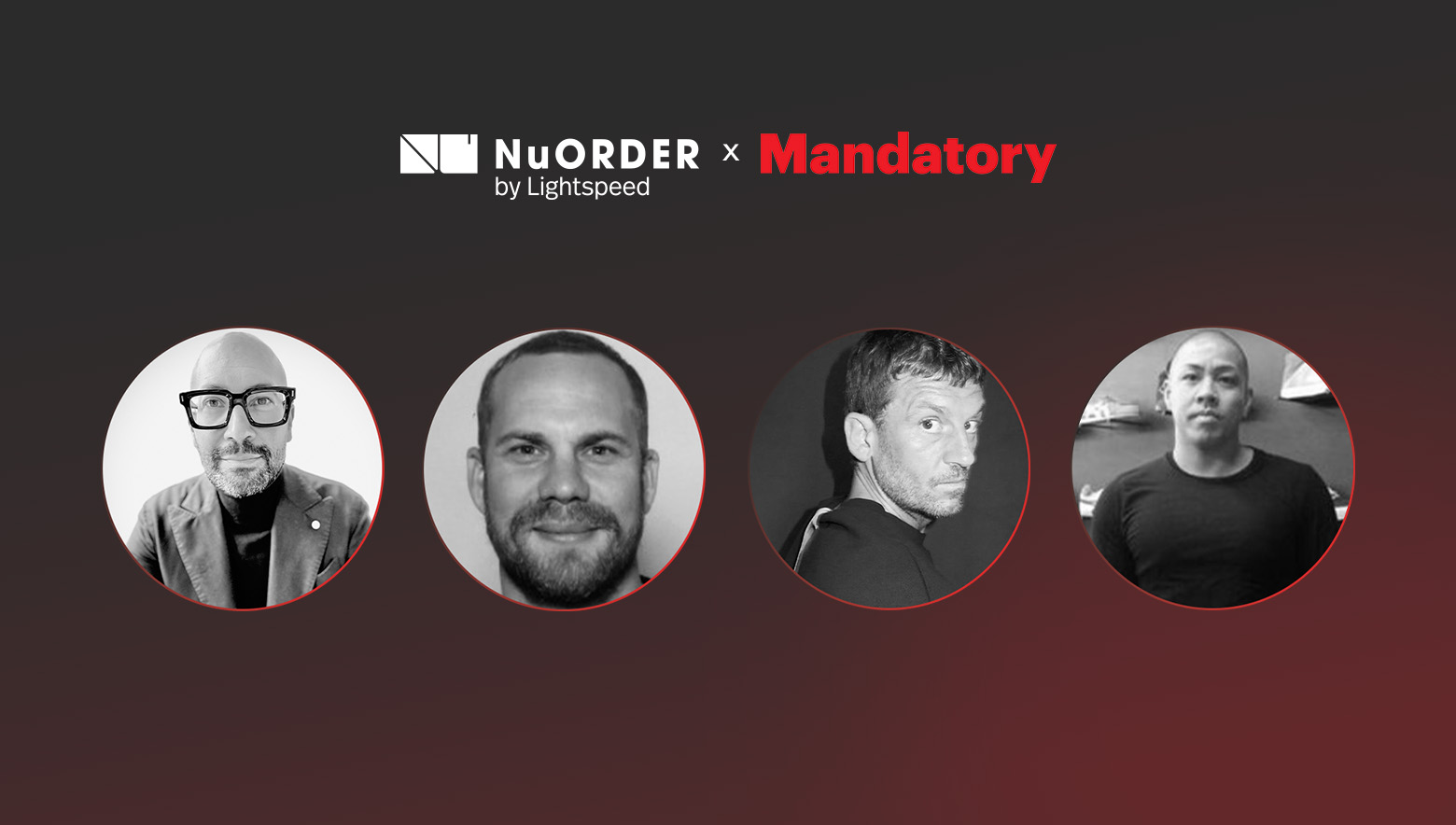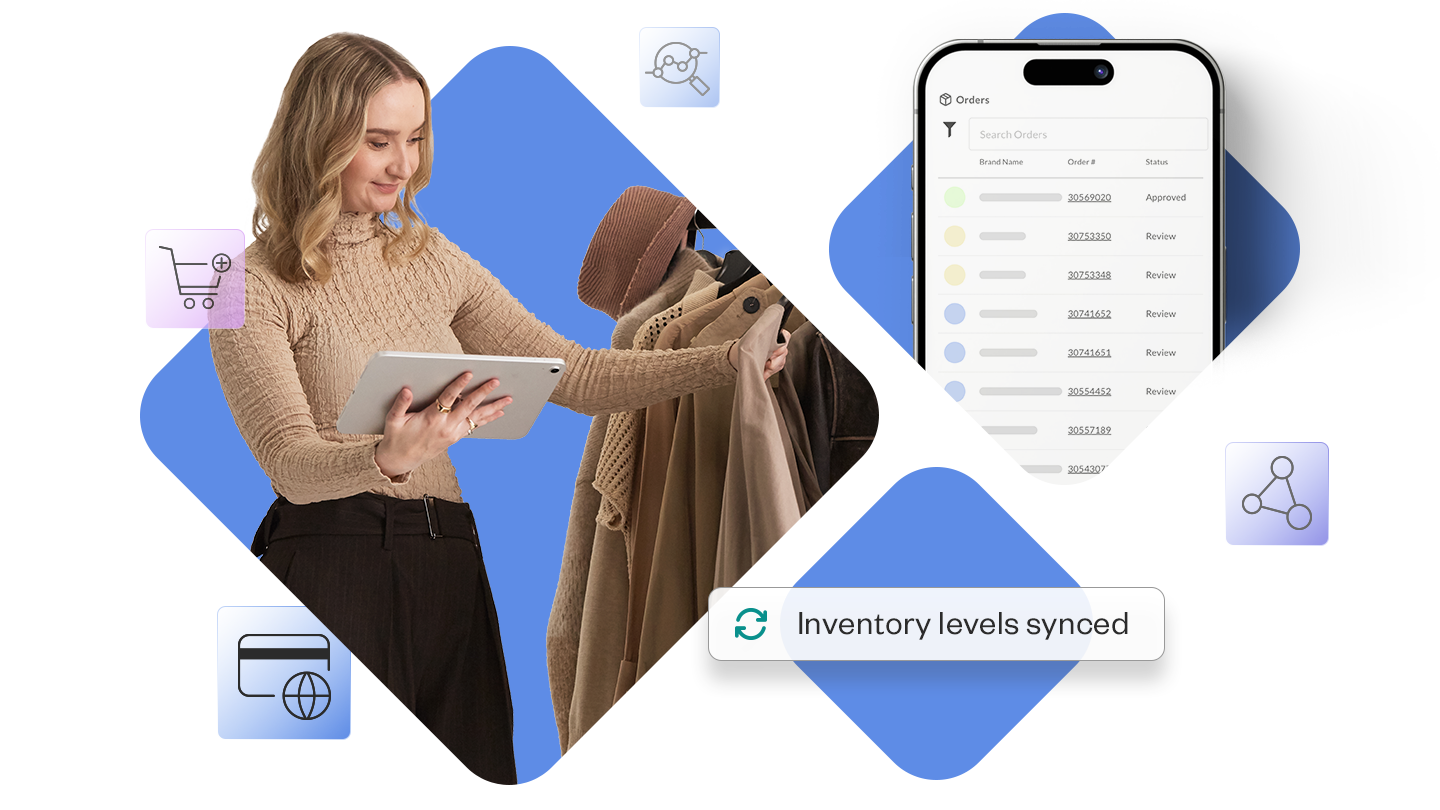Commerce meets culture: Insights from a roundtable of fashion industry leaders
Discover key highlights from our live webinar hosted by GM of NuORDER Chris Akrimi, featuring panelists Mads M. Petersen, John Skelton, and Christopher Casuga.

We had the pleasure of presenting “The future of fashion commerce: A powerhouse industry roundtable” in partnership with the Scandinavian trade event Mandatory.
The webinar was a lovely one hosted by NuORDER GM B2B Chris Akrimi and featuring three fashion industry insider panelists:

Missed the webinar? Here are a few insights from the conversation.
The next generation of shoppers are building a future that is smarter and more sustainable
The world and our feeds are saturated with content… and that won’t be going away any time in the foreseeable future. But while content may be ubiquitous, it’s never been more essential to produce high-quality content that delivers meaning, nuance, a distinct point of view, or headturning aesthetics. From crafting copy to developing visual codes, it’s important to connect everything back to your mission and your brand. This is something Gen Z and other younger consumers truly understand. They’re big on content but they’re also big on beliefs. They infuse their beliefs and values into their lifestyles, how they shop, the content they create, and more.
Gen Z is reshaping the fashion industry from the ground up. They're prioritizing repair, reuse, and resale in ways older generations didn’t. Eco-consciousness isn’t just a trend anymore — it’s the baseline expectation. This generation is building a different kind of fashion future, one that’s smarter and more sustainable.
When content is this inspired and impassioned, the energy of these messages carry a lot more weight. And, as John Skelton explains, you’ll never run out of great content ideas if you know what you stand for as a brand. He says that once you know what’s important to you, the content ideas will just keep coming — the biggest issue will be finding enough budget to make it all happen!
In the past, we used to buy something, wear it for a bit, and toss it. But today, younger consumers are flipping that script. They’re reselling items — and often at a profit. That mindset shift is radically changing how value is perceived in the lifecycle of a product.

Create FOMO. Turn trade events into enticing places to be
Mads M. Petersen emphasizes the power of connecting face to face. The founder of the Mandatory trade event in Copenhagen points to the depth of connection and the richness of in-person conversations. These deeper connections help move the needle and help form memorable relationships throughout the industry. So even though Mandatory is supported by great tech tools including a partnership with NuORDER by Lightspeed, Petersen always focuses on delighting the senses at his in-person event. A major focus? Offering an exceptional selection of cuisine.

You can’t be everything to everyone. Precision isn’t a nice-to-have, it’s the product
Chris Akrimi notes a concerning move away from developing a point of difference in the retail industry. With easy access to countless brands and alternative, similar products, it’s a crucial piece in the retail puzzle that has to be addressed. If a shopper can get the same or a similar item in another e-commerce or brick-and-mortar store, the draw to your specific doors has to be what you represent.
- How are your stores curated? Do you have a great mix of established and emerging brands?
- What’s the aesthetic of your store and your merchandising mix, and how do they differ from the rest of your competitors?
- What is the ambience/atmosphere/draw that keeps shoppers walking through your doors?
Christopher Casuga explains that it’s having a distinct POV that keeps shoppers returning for more. CNTRBND stores are lifestyle stores that offer apparel, accessories, fragrance, and more. Shoppers can discover designer favorites but also local brands, hard-to-find/niche brands, unisex brands, and more.
You can’t be everything to everyone — especially in fashion. The product has to reflect intention and integrity. When something is made for everyone, it usually ends up meaning nothing. That’s why precision isn’t a nice-to-have; it’s the product.
People are your brand… and your customer experience, too
A retail store is only as good as its team. They are the critical frontline who help shoppers feel welcomed, offer their product knowledge, and share their passion about key trends and brands. They make the sales but they’re also a critical factor in determining whether consumers will return to your store. John Skelton explains that it’s the role of leadership to get their retail teams energized. When retail teams are happy and enthused, everyone benefits… including your bottom line.

Inspiring founders and designers aside, your retail team is often the only true human extension of your brand. They’re the people consumers will have the opportunity to interact with in your stores. Make it count.
Digital has a place, but you can't swipe your way into a connection with a product
Consumers are willing to spend more when they feel as if they’ve engaged in a meaningful experience. Christopher Casuga supports this with anecdotes of shoppers spending more in his brick-and-mortar stores than they might spend online. It’s an experience. If it’s engaging, if the customer service is tuned just right, and if a shop feels like a place of discovery with a great point of difference, they’re happy and willing to spend. Besides contributing to average order value (AOV) in store, physical retail stores are excellent touchpoints that — when leveraged properly — can help retailers create deeper emotional connections with consumers.
We're flooded with content every day, but that doesn’t mean we understand what we're seeing. Real decisions — the kind that stick — happen when we can physically interact with something. You have to feel the fabric, move with the fit, sense the story. You can’t swipe your way to that kind of connection.
There’s still immense power in physical spaces. There’s something about touching a fabric, seeing it in real light, and feeling its weight that no screen can replicate. And while the right digital tools are essential, the in-person experience is irreplaceable. Some things are meant to be felt, not just seen.
Right now, the cultural moments that matter most don’t always look flashy or viral. But that’s the point — culture isn’t built by what’s trending, it’s shaped by what we choose to care about. Sometimes the most meaningful shifts happen quietly. And that’s where real transformation occurs.
Related articles
Get on the list
Wholesale tips and industry news you can’t miss, delivered weekly
